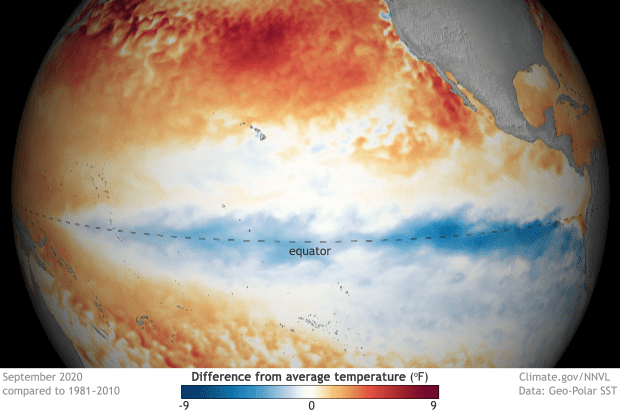NOAA winter outlook: Cold and snowy winter favored for Minnesota
La Niña event favors a rigorous winter for Minnesota.

Tropical Pacific SST departures in September 2020
NOAA
Go Deeper.
Create an account or log in to save stories.
Like this?
Thanks for liking this story! We have added it to a list of your favorite stories.


